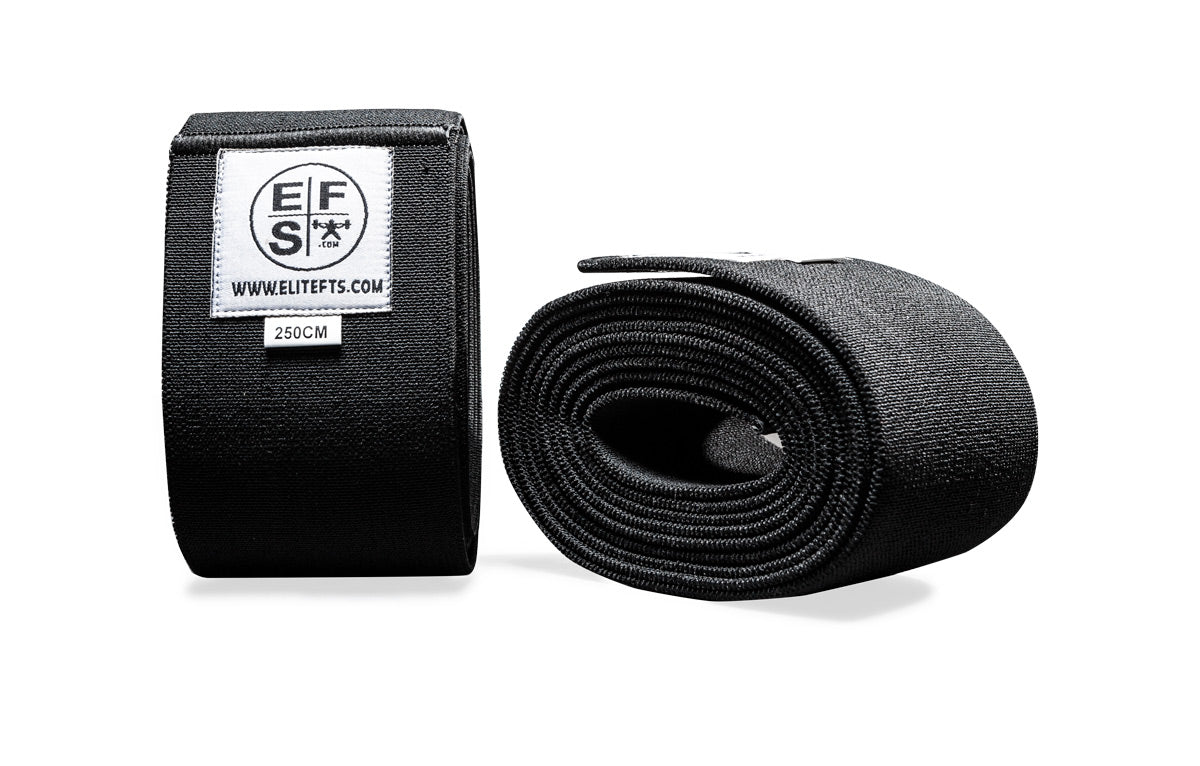RECENT: The Misuse of Post-Activation Potentiation and Pre-Exhaust in Powerlifting
Nutrition
One of the biggest factors that get overlooked a lot in training studies is the nutritional aspect of the subjects. The more volume and activity you do, the more carbohydrates you need to fuel the body. Without looking at the nutritional aspect, who knows if the athletes are properly fueled. Could there be an interference effect? Sure, but we can’t know unless all these factors are included and looked at in the research. My best guess is that it is fatigue induced and an inability to be properly fueled for recovery. We do know that from looking at volume accumulation, as one goes up, the other must go down. So, if you're in a phase of training where you want to really improve your aerobic capacity training volume, most go down to maintenance levels for resistance training and vice versa.Blood Flow Restriction
If intensity and duration seem to be two big factors that can cause higher amounts of fatigue, finding ways to decrease fatigue with similar positive results would be worth looking into. The research on blood flow restriction (BFR) training does just that. Studies have shown that BFR training allows you to get the same amount of growth with less actual work when it comes to resistance training. We have seen studies where BFR and walking have elicited muscle growth. It would be worth exploring the addition of BFR training in concurrent training modalities. A study by Oliveira et al. (2015) took 37 subjects and put them into four groups: group 1 did low-intensity interval training without BFR, group 2 did BFR, group 3 did high-intensity interval training without BFR, and group 4 did high-intensity interval training with BFR. It was a four-week study, so it fits the idea of how shorter durations (six to eight weeks) can show benefits. Beyond six to eight weeks, returns diminish. The study found that there were improvements made by all groups in onset blood lactate, BFR, HIT, and BFR + HIT, improved VO2 max, and maximal power output. The only groups to improve muscle strength gains were the BFR groups. It showed that with BFR, they improved both aerobic capacity and strength gains in a four-week block of training. In a paper by Jessee et al. (2018), they did BFR using very low loads and very high loads and found equal growth and strength gains in all groups except for the 1RM group. They also found an improvement in endurance in the high BFR group, which makes you think, if we can induce endurance changes with resistance training, we may not need as much or as intense aerobic training to elicit a similar adaptation. Further, our muscles will become more resistant to fatigue build up so the interference effect won’t be as pronounced.VO2 Max
That brings us to the paper by Robert Hickson. It looked at concurrent training compared to groups of endurance-only and strength-only. This was a ten-week study where they measured strength along with body composition and VO2 max. For this summary, we will look at the strength results. There was a difference between groups at the beginning and during the first seven weeks. The strength and the concurrent training groups increased at the same rate. In weeks eight to ten, the strength group was the only one to keep improving. The concurrent training group showed a decrease in strength during weeks nine and ten. These findings line up with a new study just published by Timmins et al (2020), except this study looked at both hypertrophy and strength. They saw a similar increase in both until they hit the six-week mark and then regression in weeks six to eight and week 12. This study took 32 recreationally active young males and put them in three different groups: resistance training only, concurrent training, and endurance training only. The resistance protocol was performed on three nonconsecutive days with two lower days and one upper day. They assessed strength with a 1RMleg press,
seated knee extension, and
bench press. The endurance protocol was performed on a cycle ergometer on three nonconsecutive days per week, mostly moderate to high-intensity intervals. The VO2 max was assessed pre-training and after six weeks to individualize training intensity. The concurrent group performed the resistance and endurance training on alternating days. Subjects were also instructed to maintain a protein intake of at least two grams/kilograms/day. The results tell me that the duration of the concurrent training has more of an effect than the idea of an interference-effect. Another thing that can lend itself to the idea that fatigue is the primary driver, more than the interference effect, is in Timmins' paper. They performed the endurance training on a stationary bike and found that the VO2 peak increased in the endurance group. In the concurrent group, the VO2 peak started to decrease in weeks six and twelve. The Timmins group also looked at upper body strength with the bench press and had pretty good dietary controls over the subjects. They also looked at a few of the variables I spoke about in the first paragraph that can play a huge role. They also found that the countermovement jump and the squat jump height increased similarly in the concurrent training and resistance training groups which is very surprising to see. Another interesting finding in this paper is that subjects who cycled also had a shortened biceps femoris, leading to a higher risk of hamstring pulls.
Micro Training Group
In a paper by Kilen et al. (2020), they looked at a more trained group of people, including one of the variables I talked about earlier. They studied 291 danish military soldiers and split them into three groups, all performing some type of concurrent training for eight weeks. Each workout lasted a total of two hours per week, along with their current military training. The micro training group performed eight fifteen-minute sessions per week, four lifting and four running sessions, with no more than three sessions per day. The classic training group performed four consecutive 15-minute sessions twice per week. The first two sessions were running, and the last two were lifting. The standard group performed two one-hour sessions twice per week combined running and lifting in the same session. Pull-up performance increased in the classical and micro training groups, which was greater p<0.05 than the standard group. All groups significantly increased knee extension strength. For hypertrophy, they biopsied 87 subjects and found a significant increase in type II fibers for all groups combined. Only the standard group improved type I fibers significantly. This study showed that even when training volume is low because the aerobic output is high, there can still be gains in strength and size to a modest degree. They concluded, "weekly distribution of low-volume concurrent training completed as either eight 15-minute bouts or two 60-minute sessions of which 50 percent was strength training did not impact strength gains in a real-world setting." Showcasing that there is a spectrum to concurrent training when strength and size are favored, it may be a good idea to minimize the aerobic output and vice versa. Understand that even at low volumes, adaptation can occur. To help prevent negative fatigue accumulation (variables that can halt progress or cause the interference effect), you'll want to choose the proper modality for concurrent training—cycling is preferred over running. Shorter durations are better than longer durations. Remember, having it as far away from your training as possible is ideal for optimal recovery. Consider short-duration high-intensity over longer-duration lower-intensity. Eat to perform towards your goals and expenditure so that the workouts are fueled and don’t take away from each other. When looking at all of the data, we can clearly see that an athlete can improve both aerobic capabilities and strength capabilities...as long as duration, frequency, timing, modality, and intensity are taken into consideration. With the new BFR research and concurrent training becoming more prevalent, we will find even more tools to elicit the adaptations we want.References
- de Oliveira, M.F.M., Caputo, F., Corvino, R.B. and Denadai, B.S. (2016), Functional gains and short‐term training. Scand J Med Sci Sports, 26: 1017-1025.
https://doi.org/10.1111/sms.12540 - Fyfe JJ, Loenneke JP. Interpreting Adaptation to Concurrent Compared with Single-Mode Exercise Training: Some Methodological Considerations. Sports Med. 2018 Feb;48(2):289-297. doi: 10.1007/s40279-017-0812-1. PMID: 29127601.
- Hickson RC. Interference of strength development by simultaneously training for strength and endurance. Eur J Appl Physiol Occup Physiol. 1980;45(2-3):255-63. doi: 10.1007/BF00421333. PMID: 7193134.
- Jessee MB, Buckner SL, Mouser JG, Mattocks KT, Dankel SJ, Abe T, Bell ZW, Bentley JP, Loenneke JP. Muscle Adaptations to High-Load Training and Very Low-Load Training With and Without Blood Flow Restriction. Front Physiol. 2018 Oct 16;9:1448. doi: 10.3389/fphys.2018.01448. PMID: 30386254; PMCID: PMC6198179.
- Kilen A, Bay J, Bejder J, Breenfeldt Andersen A, Bonne TC, Larsen PD, Carlsen A, Egelund J, Nybo L, Mackey AL, Olsen NV, Aachmann-Andersen NJ, Andersen JL, Nordsborg NB. Impact of low-volume concurrent strength training distribution on muscular adaptation. J Sci Med Sport. 2020 Oct;23(10):999-1004. doi: 10.1016/j.jsams.2020.03.013. Epub 2020 Apr 4. PMID: 32371120.
- Timmins RG, Shamim B, Tofari PJ, Hickey JT, Camera DM. Differences in Lower Limb Strength and Structure After 12 Weeks of Resistance, Endurance, and Concurrent Training. Int J Sports Physiol Perform. 2020 Mar 25:1-8. doi: 10.1123/ijspp.2019-0788. Epub ahead of print. PMID: 32209722.
- Wilson JM, Marin PJ, Rhea MR, Wilson SM, Loenneke JP, Anderson JC. Concurrent training: a meta-analysis examining interference of aerobic and resistance exercises. J Strength Cond Res. 2012 Aug;26(8):2293-307. doi: 10.1519/JSC.0b013e31823a3e2d. PMID: 22002517.

Tony Montgomery lives in Tampa, Florida. He studied exercise science at Florida Atlantic University and is currently pursuing his master's degree in exercise science at the University of South Florida. He owns Strength Union, Team Phoenix Performance (an online coaching company), Subject Zero Supplements, and Coaches Corner University (an online education platform). He competed in strongman and powerlifting, where he's hit a 2,001-pound total in the 242-pound class with wraps. Now he competes in Brazilian Jiu Jitsu and coaches athletes. He also served four years in the United States Marine Corps with 2nd Recon Bn.
Header image credit ©
www.xpressfitnessohio.com
















































































































